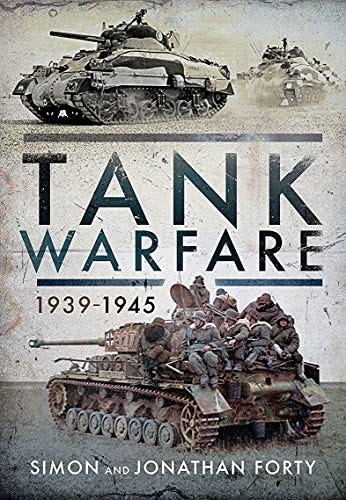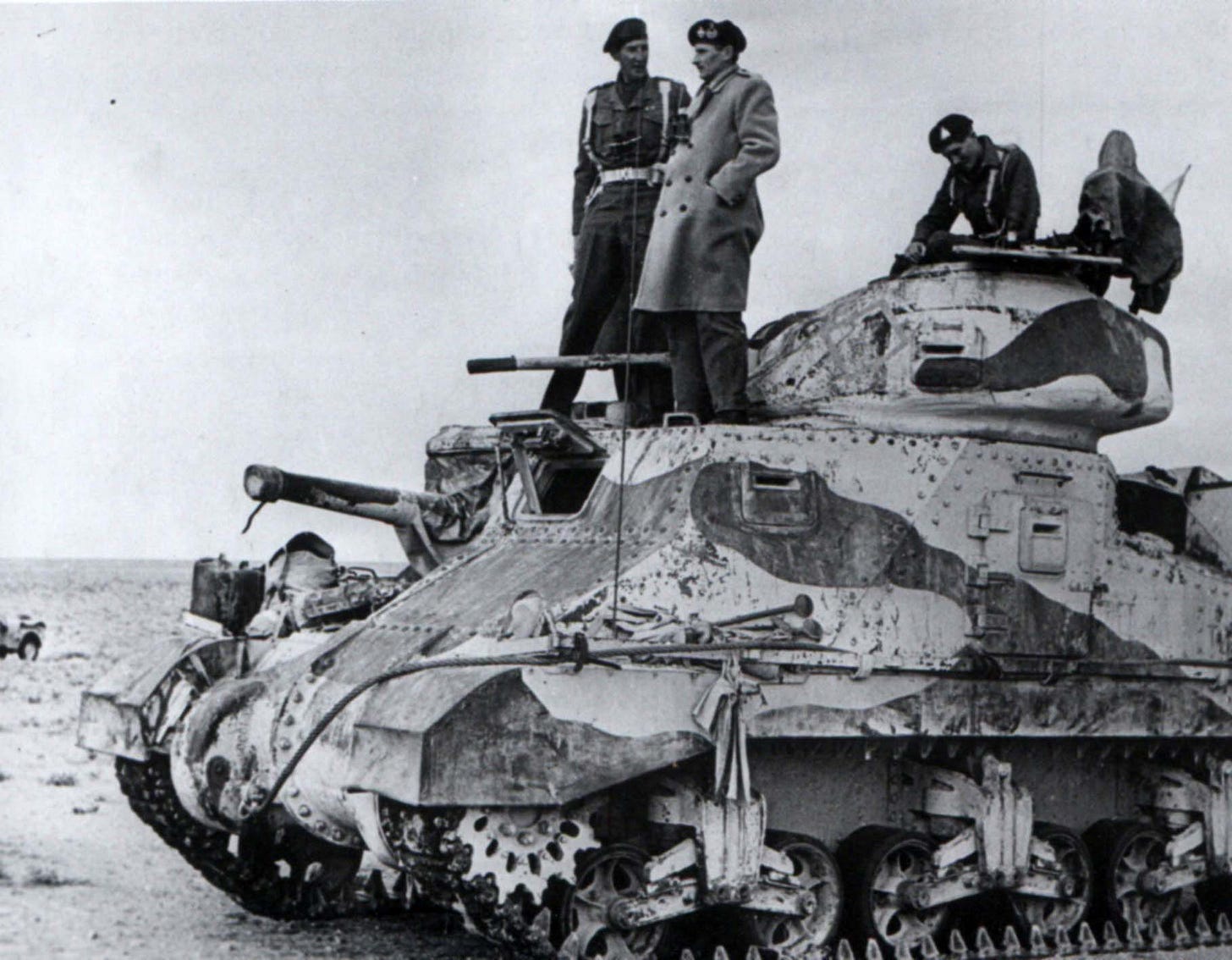Tank Warfare 1939-1945
This weeks excerpt comes from a comprehensive study of the tanks used by each side, their design and capabilities and the rapidly evolving tactics for their use

Simon and Jonathan Forty have produced a series of richly illustrated studies of different aspects of warfare in World WarI II. I previously looked at their volume on Infantry Warfare.
'In discussing tanks, many forget that the tank is not a vehicle built primarily to fight other tanks. Rather, its mission above all others is to get into the enemy's rear areas, to disorganize him, to destroy supply and communications, and generally to wreck havoc there.'
Adopting a similarly comprehensive approach in Tank Warfare they consider each of the different theatres in the war and bring a mass of material to asses how the tank was used by each side. A very useful introduction for anyone wanting a fuller understanding of the tank warfare as it evolved - but also of interest to the tank enthusiast, given the huge number of photographs alongside contemporary technical reports and post combat assessments.
The following excerpt looks at the tanks used in the desert:
Although having some good armoured cars in the Humber and Daimler; British tanks were still divided into slow, well-armoured infantry-supporting tanks and lighter faster Cruisers for tank-on-tank combat.They were still undergunned, with 2pdrs that couldn’t fire high explosive shells to deal with dug-in infantry and antitank artillery, and most of them still suffered from endless automotive problems.
The Matilda II had excelled against the Italians but by 1942 its slow speed, light armament and vulnerability to more powerful antitank guns (especially the 88mm) and the new upgunned PzKpfw IIIs and IVs rendered it virtually obsolete - for its turret ring could not be enlarged and therefore it could not upgrade its main gun.
The Valentine was a slow infantry tank with 65mm-thick frontal armour porting a 40mm/2pdr mam gun firing only AP ammo. By 1942 it, too, was also considered obsolete, although it was at least powered by a reliable bus engine.
The polygon-turreted Crusader was a cruiser that suffered from constant automotive failures yet was the fastest tank in theatre, with the same 40mm/2pdr main gun and ammo as the Valentine, upgraded in 1942 to 57mm/6pdr (Crusader III) at the cost of a reduced turret crew.
A small number of Churchills also saw action towards the end of the campaign. Another slow infantry tank with chronic engine problems, it was at least equipped with a 57mm/6pdr gun. In towed antitank capability the British had at first a 40mm/2pdr that was replaced in 1942 with a 57mm/6pdr gun and by 1943 the powerfully effective 72.6mm/17pdr had been rushed into service to counter the Tigec
They also had the excellent all-purpose Ordnance QF 25pdr (87.6mm) artillery piece.
American equipment was certainly critical for the British and Commonwealth forces and for the most part much appreciated, for the attrition rate during their combat learning curve was astounding, and the North African campaign plainly illus trated that this was, above all, a war of resources and production.
The M3 light was named the Stuart by the British, and it was just about on a par with the Panzer III Aus G in its armour and M5 37mm main gun.lt had only a two-man turret crew and a limit ed fuel capacity and range; by 1942 it had been relegated to a reconnaissance role.
The M3 medium Grant (as it was known with its British-designed turret; they dubbed the American model the Lee) was well-armoured (38-51 mm) and had considerable fire- power- a 37mm gun in the turret, and a 75mm in a right-hand sponson and up to four machine guns. It was certainly a shock to the Germans when they first encountered it, but to use its strange sponson-mounted 75mm necessitated dangerously exposing its vulnerable high silhouette and riveted construction, and it had a poor off-road performance. As the M4 Sherman became available the M3 medium was replaced.
Though also not without faults (a high silhouette and a propensity to catch fire when hit), the Sherman was one of the outstanding tanks of the war and was pro duced in large numbers. Its speed, rugged automotive reliability and 75mm M3 main gun made it a powerful danger to all Axis armour in theatre. Also from late 1942 some Allied self-propelled artillery began to appear in the form of the British Bishop (converted Valentine chassis with 25pdr gun-howitzer) and the American Priest (105mm Howitzer Motor Carriage M7)
American tanks made a huge difference to the desert campaign.The first to reach the beleaguered British in Africa were the M3 medium tanks, partly financed by Lend-Lease.
Objectively, the M3 medium was a poor tank with a high silhouette, sponson-mounted main gun and poor, riveted armour, and it is no surprise that of the 2,855 that reached the British, 1,700 went to Australia for home defence and 900 went to India. However, in May 1942 it was a godsend, its gun better than any British tank gun and capable of knocking out any of the opposition from decent range, and its engine reliable.
This (Below) is the Grant version, with an altered turret to allow space for a No 19 wireless set in the bustle. Monty is using it as a dais to speak to the troops. Luckily, waiting in the wings was the M4 medium (Above) dubbed the Sherman by the British. It arrived on the scene in October 1942: the British would end up with over 17,000 of this war-winning design. Note the sand shields on these Sherman Ils (the M4AI's British designation).
On the Axis side was the Italian Ml3/40, whose light armour and bolted and riveted construction made it very vulnerable, although if did have a 47mm main gun.
The PzKpfw III and IV were really different beasts to their Allied counterparts, for they were tried and tested designs with upgrade paths that enabled them to upgun and uparmour and so remain in use and be mass-produced.
The PzKpfw III was designed for tank-on-tank combat, armed with a high-velocity 37mm gun that was later up- gunned in the Ausf F with a short-barrelled Kwk 38 1742 50mm gun, and then later still a long-barrelled 50mm. It could also mount a short-barrelled 75mm, used to fire high explosive shells for infantry support - a reversal of roles between it and the PzKpfw IV.
Under General Kesselring in Tunisia (1943), the Afrika Korps was rearmoured with PzKpfw III Ausf L and M. Originally intended as an infantry support tank, the PzKpfw IV was armed with a short 75mm gun and until the longer-gun variant began production, the tank was outperformed by the PzKpfw III in armour penetration.
As increasing numbers of the PzKpfw IV were armed with the long-barrelled 75mm Kwk 40 from 1942, it swapped roles with the PzKpfw III as a tank killer that could penetrate all British and US armour in theatre at ranges of up to 1,500m and was used by Rommel to spearhead his offensives.
In early 1943 the first Tiger Is reached Africa armed with a powerful 88mm gun. Superior to any Allied tank, fortunately their arrival was too little and too late to change the fate of the Axis forces in North Africa

This excerpt from Tank Warfare appears by kind permission of Pen & Sword Books Ltd. Copyright remains with the author.




